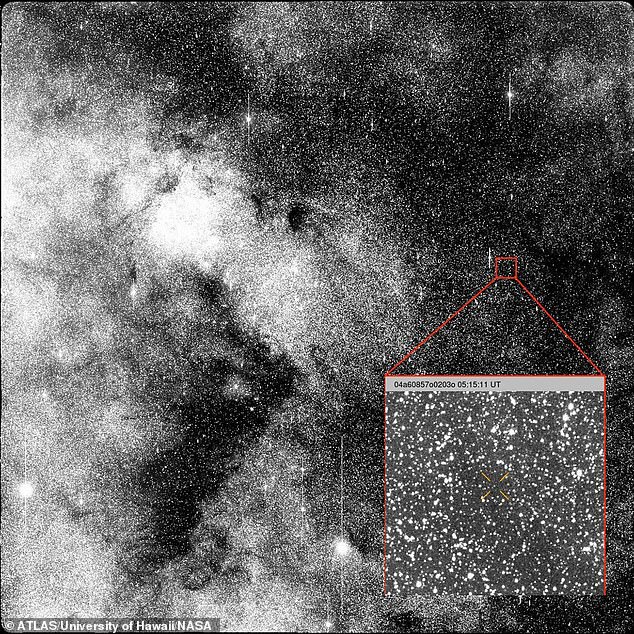
Scientists Identify Key Evidence Indicating ‘Oumuamua as Alien Technology
Mysterious Interstellar Object 3I/ATLAS Sparks Alien Craft Speculation
[Image 1: Artist’s depiction of 3I/ATLS moving through space]
Caption: The interstellar object 3I/ATLAS, detected in July, is traveling through our solar system at 135,000 mph.
Astronomers recently detected 3I/ATLAS, a 12-mile-long interstellar object hurtling toward the inner solar system. Originating from another star system, it’s only the third such visitor ever observed, following ‘Oumuamua (2017) and Comet Borisov (2019). Harvard physicist Prof. Avi Loeb suggests it could be an alien spacecraft due to its unusual size and trajectory.
Unusual Size and Speed
Detected by NASA’s ATLAS system on July 1, 3I/ATLAS follows a steep, high-speed path from Sagittarius. By October 30, it will pass within 130 million miles of the Sun—closer than Mars’ orbit. While it poses no threat to Earth (passing 150 million miles away), its dimensions puzzle scientists.
[Image 2: Size comparison of 3I/ATLAS, ‘Oumuamua, and a comet]
Caption: At up to 24 km long, 3I/ATLAS dwarfs ‘Oumuamua (100m) and typical comets.
Astronomers estimate its size based on reflectivity. If rocky (reflecting 5% light), it spans 12–14 miles—200 times larger than ‘Oumuamua. “Objects this size are millions of times rarer than smaller ones,” says Loeb. His calculations suggest such massive objects shouldn’t exist in enough abundance to reach us randomly, hinting at possible “technological design” steering it toward our Sun.
The Alien Hypothesis
Natural objects this large are extraordinarily rare. Loeb’s paper notes that if 3I/ATLAS is solid, its galactic abundance would implausibly equal a quarter of the Milky Way’s stellar mass. “It makes zero sense,” he argues. The odds of it randomly targeting our solar system? “Like winning the lottery twice in a row.”
[Image 3: Trajectory diagram of 3I/ATLAS passing through the solar system]
Caption: The object’s calculated path suggests intentional targeting of the inner solar system, says Loeb.
Comet Alternative: Simpler, But Uncertain
Most scientists classify 3I/ATLAS as a comet. If icy, sunlight could vaporize its surface, creating a bright gas/dust envelope that inflates its apparent size. NASA and ESA support this theory, but Loeb remains skeptical. Recent telescope images show no clear gas emissions, only a “reddening” effect possibly from surface dust.
[Image 4: Possible comet structure vs. solid asteroid]
Caption: A comet’s reflective envelope (left) vs. a solid asteroid (right). Observations remain inconclusive.
What’s Next?
As 3I/ATLAS nears the Sun, heat may reveal its true nature. Increased outgassing would confirm a comet, while no activity could revive the alien spacecraft debate. “We’ll know more by late October,” says Loeb, drawing parallels to Arthur C. Clarke’s Rendezvous with Rama, where an interstellar object proves artificial.
[Image 5: ‘Oumuamua illustration]
Caption: ‘Oumuamua (2017) sparked similar alien theories but was later deemed a comet.
While most experts favor natural explanations, Loeb urges open-mindedness: “Science progresses by eliminating possibilities. All we need is better data.” Whether comet or craft, 3I/ATLAS underscores the mysteries lurking in interstellar space.
Word count: ~600


